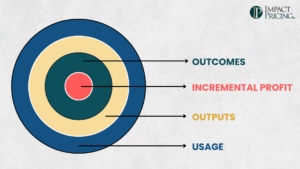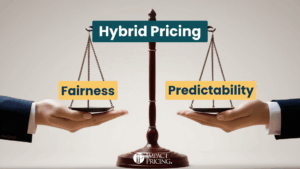A friend of mine sent me this:
I wanted to share a strange pricing mechanism that I encountered in the wild. My uncle recently shared his purchase of a Stealth Core Trainer. I decided to purchase one, too. They appear to only have one SKU on their website. I chose “order now” and filled out my address, billing, etc. and clicked next.
“Would you like to upgrade to the (better) or (best) model?” It’s the first time you see options – after you’ve committed to buy. I didn’t write down their prices but it was about what you’d expect. I stayed with my original SKU and clicked next. Then I was presented with an add on option (discounted 1 year subscription to the games). This I did buy.
So, I went to the website and looked around. He was accurate. There is no hint of anything else to buy. Because I didn’t purchase the trainer, I didn’t get to look inside the website (would that be a business expense?), but my friend’s a pretty observant guy, so let’s take him at his word.
Unorthodox Pricing Methods: Good or Bad?
What is going on? It starts with one of my favorite adages. Confused buyers don’t buy. Because they sell precisely one product, marketing and sales become simpler. They don’t have to explain the differences between the options. The buyer only has to decide if the product is worth the price.
After the buyer has purchased, they see the up-sells. In a way, this is smart. The company obtains commitment from the buyer, then shows the add ons. There is only an upside at this point.
What makes this innovative?
Most companies put the upgrades and up-sells on the main pricing page of their website. Buyers get to choose. In most cases, this is probably the best approach.
Why does this work for them and when should you consider it?
I would say this works for a couple of reasons. First, they are selling assuming a Will I decision, meaning buyers aren’t considering competitive alternatives. The company needs to get the buyer to say “yes”. The buyer is more likely to say yes if the decision is simple. However, what if the buyer was considering two different brands of core trainers. The other brand had their good, better, best and up-sells on their webpage and this company didn’t. I’d argue the other brand would look more professional, be more trusted, and win more business.
Another reason this approach works for them is probably that the product is like an impulse purchase. I would guess they need people to buy the first time they arrive at the site. Anything that slows down the purchase process also tends to destroy it. They don’t have leeway for buyers to deliberate. Hence, one product, one decision. Keep it simple. Keep it fast.
Although I don’t recommend this strategy for most companies, it was interesting to explore it and figure out why and when it may make sense for you.
To finish my friend’s story, “Oh, and I got the fitness board and tried it out last night… 2.5 minutes of games and I’m feeling it today.”
Just because they know it’s an impulse purchase doesn’t mean it doesn’t work.
Go make an impact!















